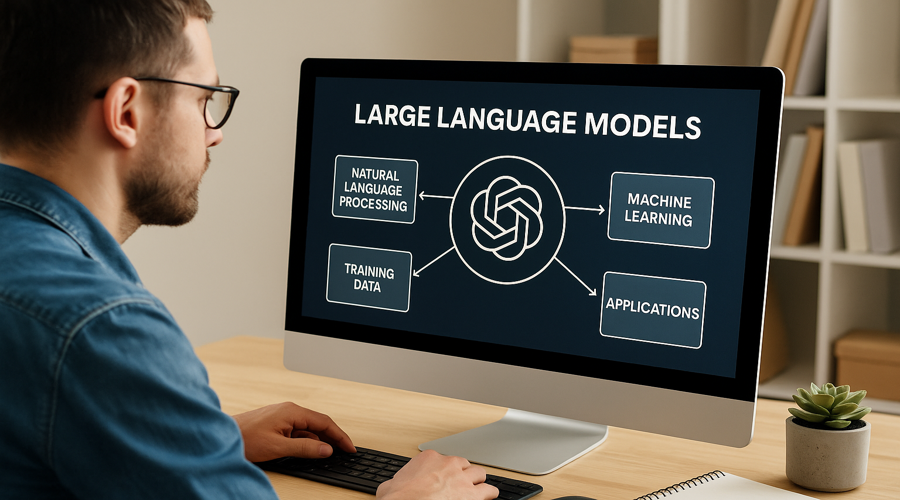Chatbots are becoming essential tools for modern businesses, offering a fast and efficient way to manage customer interactions. Whether through websites or AI Phone Calling Platforms, chatbots help handle routine tasks like answering questions, booking appointments, and providing updates—freeing up human staff for more complex work.
What is a chatbot?
A chatbot is software that simulates human conversation through text or voice, helping businesses automate tasks like answering FAQs, guiding users, or handling bookings. AI chatbots use machine learning and natural language processing (NLP) to understand queries and manage more complex, natural interactions. Increasingly used in AI-Powered Call Reception and AI Phone Calling Platforms, chatbots provide fast, reliable support around the clock, reducing the need for human agents in routine interactions.
Types of chatbots
Rule-based chatbots
These follow set scripts and decision trees, responding to specific keywords or commands. They’re ideal for simple tasks—such as confirming business hours or booking a service—and offer predictability.
AI-powered chatbots
AI assistants use NLP and machine learning to handle complex conversations. They can recognise context, manage unexpected questions, and learn from interactions, making them a strong fit for AI Call Centres and other advanced applications.
Voice chatbots
Voice bots allow spoken interaction, commonly used in AI Phone Calling Platforms. They handle phone-based tasks like appointment scheduling, order confirmations, or simple customer queries, reducing the load on human reception teams.
The value of chatbots
Operational efficiency
Chatbots help businesses manage high volumes of customer queries with minimal human involvement. In an AI-Powered Call Reception setup, for example, a chatbot can screen calls, answer questions, or route callers to the right department.
Around-the-clock service
A key value-add is 24/7 availability. Chatbots don’t need breaks, enabling companies to offer continuous support—a competitive edge in today’s fast-paced environment.
Business insights
Chatbot interactions generate valuable data that helps businesses identify customer needs and improve their service.
How chatbots work
Understanding input
Chatbots begin by processing user input. Basic bots match specific phrases to pre-written responses, while AI chat assistants break down sentences using NLP to understand intent.
Producing responses
Once intent is clear, the chatbot delivers a relevant reply. AI chat assistants personalise responses and handle follow-up questions, mimicking natural conversation flow.
Voice interaction
In AI Phone Calling Platforms, speech recognition converts spoken words into text, enabling the chatbot to process requests and respond verbally, creating a seamless experience.
Common chatbot use cases
Customer support
Retailers use chatbots to track orders, handle returns, and recommend products. In service industries, bots help manage bookings and provide real-time assistance.
Call centre operations
AI chatbots are widely deployed in AI Call Centres to answer FAQs, resolve billing issues, or reset passwords, freeing human agents to focus on complex matters.
Internal support
Chatbots also assist internally—handling HR questions, onboarding new staff, or offering quick IT support—improving productivity across teams.Benefits of chatbots
Instant responses
Chatbots deliver immediate answers, reducing wait times and improving customer satisfaction, especially in high-demand environments like AI Call Centres.
Scalable service
They can handle thousands of queries simultaneously, ensuring businesses stay responsive even during peak times or promotional periods.
Cost-effective
By automating routine tasks, chatbots cut down on staffing needs and free up human agents to focus on value-adding work, improving overall efficiency.
Risks and limitations of chatbots
Limited capabilities
Rule-based bots are rigid and can’t handle unexpected queries. Even AI chat assistants may struggle with slang, accents, or complex multi-part questions.
Miscommunication risks
In sensitive areas like healthcare or finance, misunderstandings can have serious consequences. Careful design and regular testing are essential to mitigate errors.
Data privacy concerns
Chatbots handle sensitive customer data, especially in AI Phone Calling Platforms. Strong security measures and compliance with privacy regulations are critical.
Chatbot best practices
Set clear objectives
Define what you want the chatbot to achieve—whether it’s reducing call volumes, improving response speed, or boosting customer satisfaction.
Ensure smooth escalation
Design the chatbot to pass complex issues seamlessly to human agents, ensuring the customer experience remains smooth even when automation falls short.
Continuous improvement
Regularly monitor chatbot performance, review conversations, and refine scripts or AI models. This keeps responses accurate and maintains customer trust.
The evolving role of chatbots
While chatbots have become a standard tool for customer interactions, their role is rapidly expanding. What began as simple conversational bots answering FAQs or handling basic requests has grown into a demand for more intelligent, autonomous systems. Today’s businesses aren’t just looking for chatbots—they want AI solutions that can handle complex tasks, make decisions, and work alongside other digital tools.
This shift reflects a broader move from basic scripted interactions to AI-powered agents capable of managing multi-step processes with minimal human oversight. Users now expect these systems to not only converse but also complete actions, integrate across platforms, and continuously learn from each interaction.
At Nexmira, we’ve embraced this evolution with NexAgentix—a next-generation AI agent platform that goes beyond traditional chatbots. NexAgentix combines conversational AI with advanced automation and multi-agent coordination, allowing businesses to deploy intelligent agents that can manage entire workflows, from handling customer enquiries to processing transactions and supporting internal teams. It represents the next step in AI-Powered Call Reception and AI Phone Calling Platforms, offering a more capable, flexible solution for businesses ready to move beyond simple chatbot functions.
Frequently asked questions:


